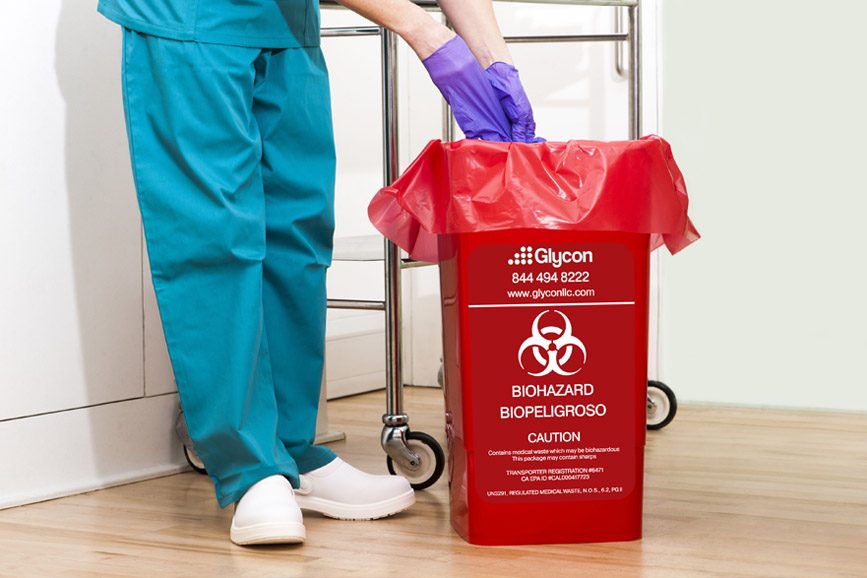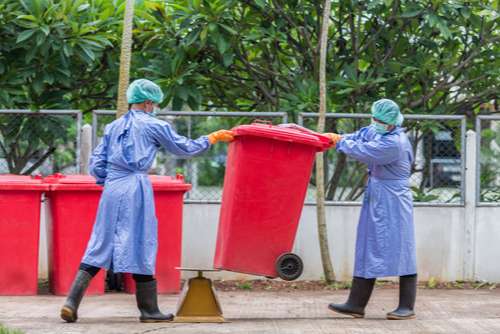Proactive Wellness Solutions: Picking the Best Medical Waste Removal Near You
Effective and Ecologically Friendly Medical Garbage Disposal Solutions
In the ever-evolving area of medical care, the problem of clinical waste disposal remains a subject of paramount importance. As hospitals, centers, and various other healthcare centers make every effort to supply quality individual treatment, they must likewise resolve the challenge of effectively and sensibly disposing of their waste.
Waste Segregation Practices
Efficient waste partition methods are important to ensure the safe and appropriate disposal of medical waste. Medical waste, which includes products infected with possibly infectious materials, have to be managed in such a way that minimizes the risk of harm to both public health and wellness and the atmosphere. Appropriate waste partition plays an essential duty in achieving this objective.
Waste segregation entails the separation of different sorts of waste based on their features and potential risks. This process ensures that each kind of waste is treated and taken care of appropriately (medical waste disposal services with WasteX). It starts at the factor of generation, where medical care centers should have marked bins and containers for various waste classifications, such as sharps, contagious waste, pharmaceutical waste, and non-hazardous waste
By setting apart clinical waste at the resource, healthcare service providers can stop cross-contamination and decrease the danger of exposure to contagious agents. This method additionally promotes the recycling and healing of particular materials. Segregating and reusing clean plastics and glass minimizes the need for raw materials and reduces the ecological impact of clinical waste disposal.

Autoclaving and Sterilization Methods
In order to ensure the correct and risk-free disposal of medical waste following efficient waste segregation methods, healthcare centers should utilize autoclaving and sanitation methods. Autoclaving is an extensively utilized approach that utilizes high-pressure heavy steam to sterilize clinical waste.
One more generally utilized sanitation method is chemical sterilization. This entails treating the waste with chemicals such as ethylene oxide or hydrogen peroxide, which eliminate microbes by disrupting their cellular framework. Chemical sanitation is typically made use of for heat-sensitive items or materials that can not hold up against the heats of autoclaving. It is vital to note that chemical sterilization needs correct handling and disposal of the chemicals made use of, as they can be hazardous to human health and wellness and the atmosphere if not managed correctly.
On-Site Waste Treatment Systems
Healthcare facilities have carried out on-site waste therapy systems to attend to the disposal of medical waste in a risk-free and effective way. These systems give a affordable and practical remedy for taking care of clinical waste created within the center. On-site waste treatment systems use numerous technologies to treat and dispose of medical waste on-site, lessening the need for transportation to off-site facilities.
One commonly made use of on-site waste treatment system is the microwave innovation. This technology uses microwave energy to disinfect and decontaminate clinical waste, minimizing its volume and rendering it safe for disposal. An additional system is the chemical sanitation innovation, which involves dealing with medical waste with chemicals to eliminate pathogens and reduce its harmful nature. This approach is specifically efficient for liquid clinical waste.
On-site waste therapy systems offer a number click to investigate of advantages. First of all, they remove the threat of medical waste being mishandled during transport, reducing the possibility for contamination and exposure to dangerous substances. Additionally, these systems help healthcare facilities follow waste administration laws by providing a practical and effective disposal technique. On-site therapy systems decrease the general environmental influence of clinical waste by decreasing transport and the requirement for garbage dump area.
Recycling and Repurposing Initiatives
As healthcare facilities strive for sustainable waste management practices, they are increasingly checking out recycling and repurposing campaigns as a method of lowering the ecological effect of medical waste. Recycling and repurposing efforts include discovering ingenious ways to reuse or change clinical waste right into brand-new items or materials. This not only helps to minimize the quantity of waste that winds up in incinerators or garbage dumps however additionally reduces the consumption of resources and power required for manufacturing new items.
One instance of reusing in the health care industry is the reprocessing of single-use clinical devices. This not just reduces the quantity of waste created however also conserves healthcare facilities substantial costs connected with purchasing new tools.
Another reusing campaign involves the recycling of plastic containers, such as medicine containers or syringe housings. These containers can be accumulated, sorted, and sent to reusing centers where they are processed, melted down, and changed into new plastic products. This aids to conserve resources and minimize the need for virgin plastic manufacturing.
Along with reusing, repurposing efforts involve finding alternate usages for clinical waste. Shredded paper waste from medical records or packaging materials can be repurposed as bedding material for animals or as insulation material. Organic waste such as food scraps from health care facilities can be composted and utilized as fertilizer in gardens or agricultural fields.

Renewable Resource Solutions
One effective technique to minimizing the ecological impact of healthcare procedures entails applying renewable resource solutions. Health care facilities, such as healthcare facilities and facilities, consume substantial amounts of energy for numerous objectives, including lighting, home heating, air conditioning, and running clinical devices. By transitioning to sustainable energy resources, these centers can considerably decrease their carbon impact and add to a more lasting future.

Carrying out renewable resource options in medical care centers not just reduces greenhouse gas discharges yet additionally offers long-lasting price financial savings. While the initial financial investment in renewable energy facilities might be greater, the lasting operational costs of renewable resource systems are substantially reduced contrasted to traditional fossil fuel-based energy sources. Furthermore, renewable resource systems are trustworthy and can give a stable and uninterrupted power supply, making certain continuous healthcare solutions also throughout power interruptions or emergencies.
Conclusion
Finally, implementing eco pleasant and effective medical waste disposal options is crucial for keeping a lasting health care system. By adopting waste partition methods, autoclaving and sterilization techniques, on-site waste treatment systems, reusing and repurposing efforts, and renewable resource solutions, health care facilities can significantly reduce their ecological effect. These steps not only shield the environment but additionally promote public health and safety and security. Therefore, it is critical for health care organizations to focus on the execution of these lasting garbage disposal techniques.
It begins at the point of generation, where healthcare centers should have assigned containers and containers for different waste groups, such as sharps, transmittable waste, pharmaceutical waste, and non-hazardous waste.
In order to make sure the appropriate and risk-free disposal of clinical waste following efficient waste segregation methods, medical care facilities should utilize autoclaving and sanitation techniques.Healthcare facilities have carried out on-site waste therapy systems to address the disposal of medical waste in a risk-free and efficient way. On-site waste therapy systems make use of numerous technologies to treat and dispose of medical waste on-site, lessening the demand for transport to off-site centers.
As healthcare facilities strive for sustainable waste management practices, they are significantly discovering recycling and repurposing initiatives as a means of decreasing the environmental effect of clinical waste. - medical waste removal service